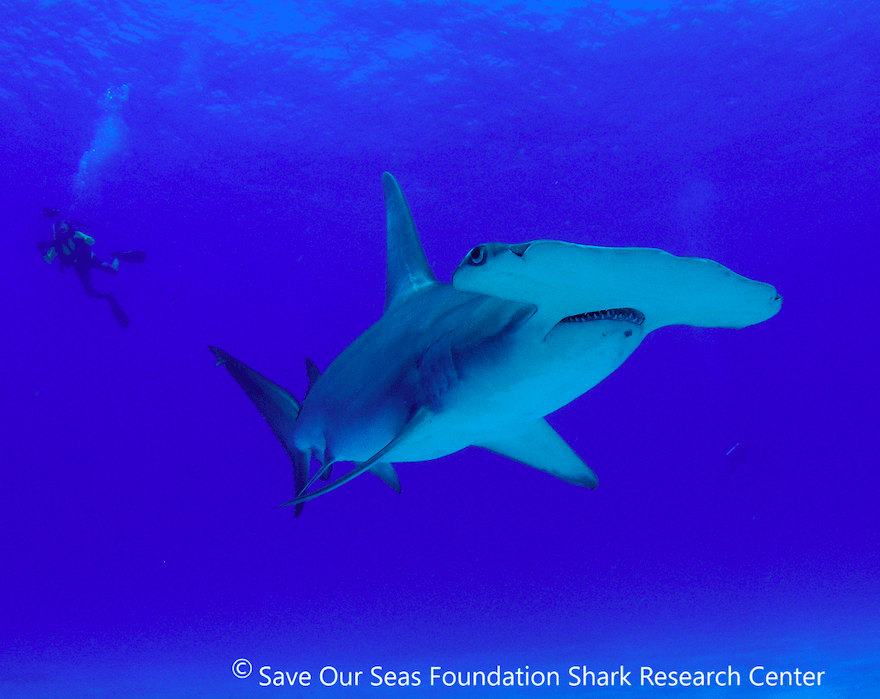Roughly one hundred million sharks are killed each year for the meat and shark fin market. In order to learn more about some of the declining species, a team of researchers from NSU’s Save Our Seas Foundation Shark Research Center (SOSF SRC) and the Guy Harvey Research Institute (GHRI), along with the Fisher Finder Adventures, the University of Rhode Island and the University of Oxford, conducted a study and recently published a paper about the migrational patterns of hammerhead sharks.
There are around 510 species of sharks in the ocean, and 19,608 sharks per species are killed each year for the meat and fin industry. The number one fin on demand in this international market, due to their size and perfect composition of fin needles, comes from three species of hammerhead sharks, causing the team of researchers to narrow in on this specific species.
NSU’s own marine research scientist, Mahmood Shivji, who specializes in the field of sharks and is the director of NSU’s GHRI and SOSF SRC, helps us gain a better understanding of possibly the most unique species on the face of the earth – the hammerhead shark.
Shivji has a number of achievements under his belt, with his most notable being sequencing the entire genome of the great white shark. His team also discovered a new species of hammerhead shark, bringing the total hammerhead shark species known to 10.
Shivji has felt a deep connection with the subject matter, and has been focusing on marine life, sharks in particular, within his research for the past 25 years
When asked, “Why do sharks bite?” Shivji replied, “Most of them don’t!”
Shivji further explained how, out of the approximately 510 species of sharks, only three of them – the great white shark, the bull shark and the tiger shark – are the ones implicated in the vast majority of bites on humans, .
Hammerhead sharks possess a unique facial structure with their signature “T” silhouette. Shivji explained that it actually gives this shark an enormous predatory advantage. It has a heightened sense of smell and sight as their nostrils and eyes are further apart, and this head shape allows them to glide better and turn sharply in the water, which many other species of shark cannot do.
This species of shark also uses electric impulses to detect their prey, hence why they are probably the ocean’s fiercest predators, and for the hammerhead, due to their increased head surface area they have a lot more space in between each electrical receptor, making them even better hunters.
Although hammerhead sharks are incredibly effective predators, they often fall prey at the hands of humans for the fin and meat trade, served as a cuisine in numerous countries. Because sharks are at the top tier of the oceanic food web, the whole ecosystem beneath them suffers when they are fished out, and the wellbeing and health of our oceans are quite literally in the hands of mankind and we need to do our part in protecting them.
Professor Shivji runs the “Save our Seas Shark Research Center” (https://saveourseas.com/sosf-shark-research-center/)) and the Guy Harvey Research Institute (http://www.ghritracking.org ) at NSU, and urges each and every one of us to get involved with, not only physical actions, such as boycotting shark meats and fins, but educating ourselves on sharks and their nature so that we can work towards detaching the stigma around the fear and misconceptions around sharks. Students interested in learning more about Shivji’s and his team’s research can visit the websites mentioned above.
After all, a fellow shark preserves a fellow shark, so Fins Up to saving the hammerheads!
The recently published paper can be viewed online here.


